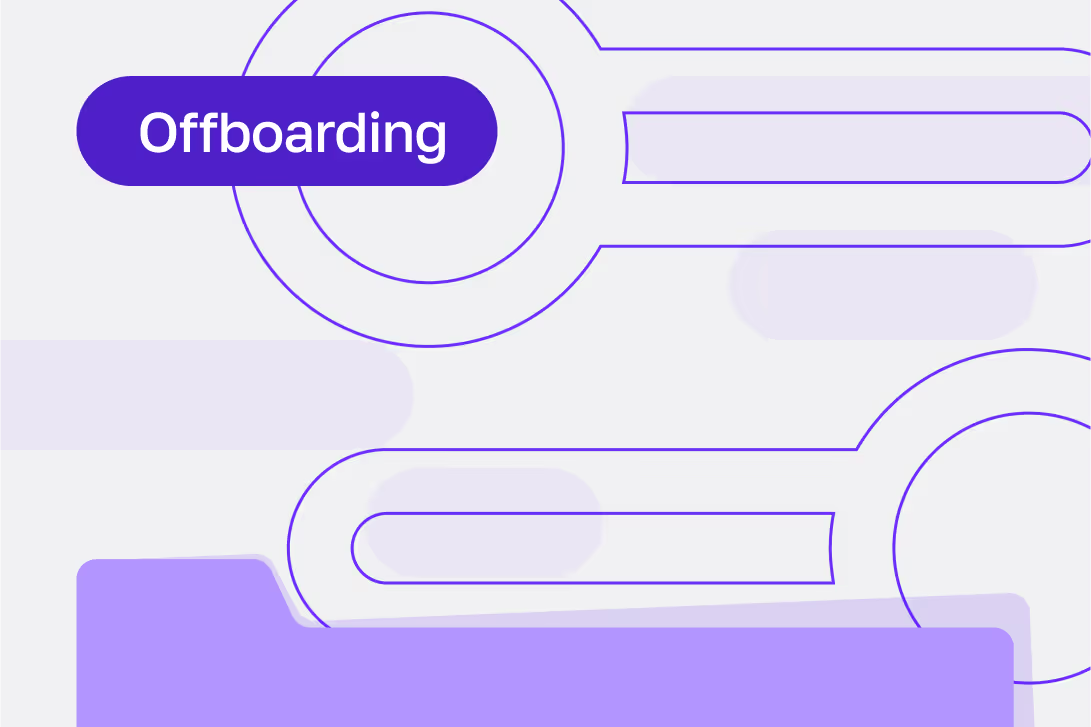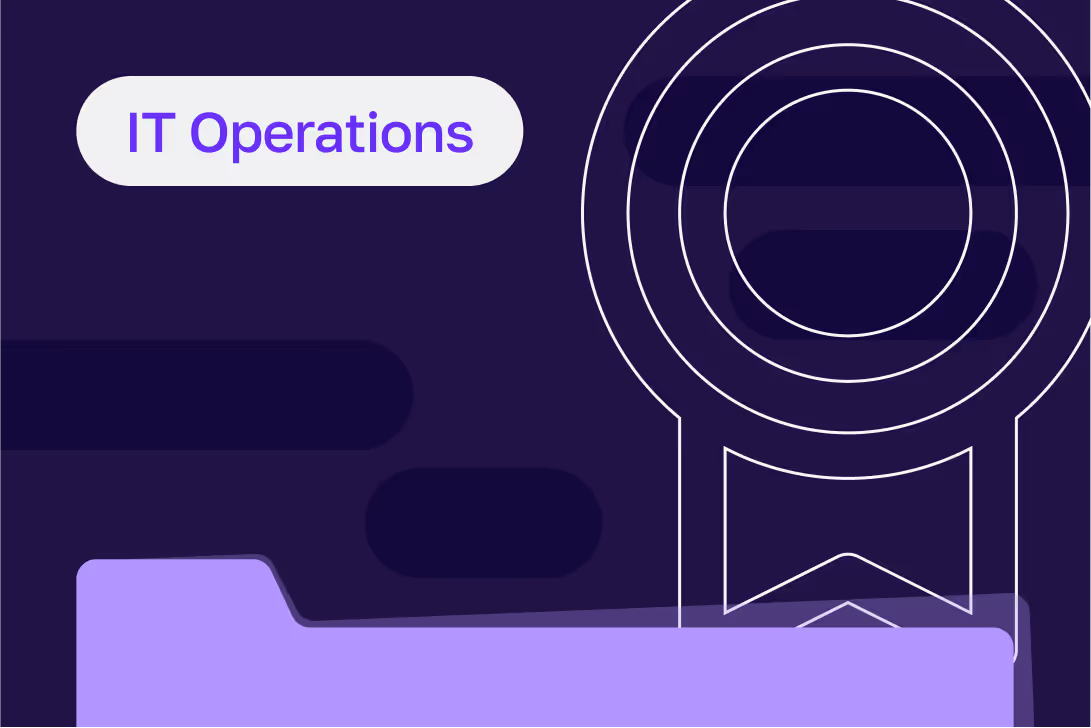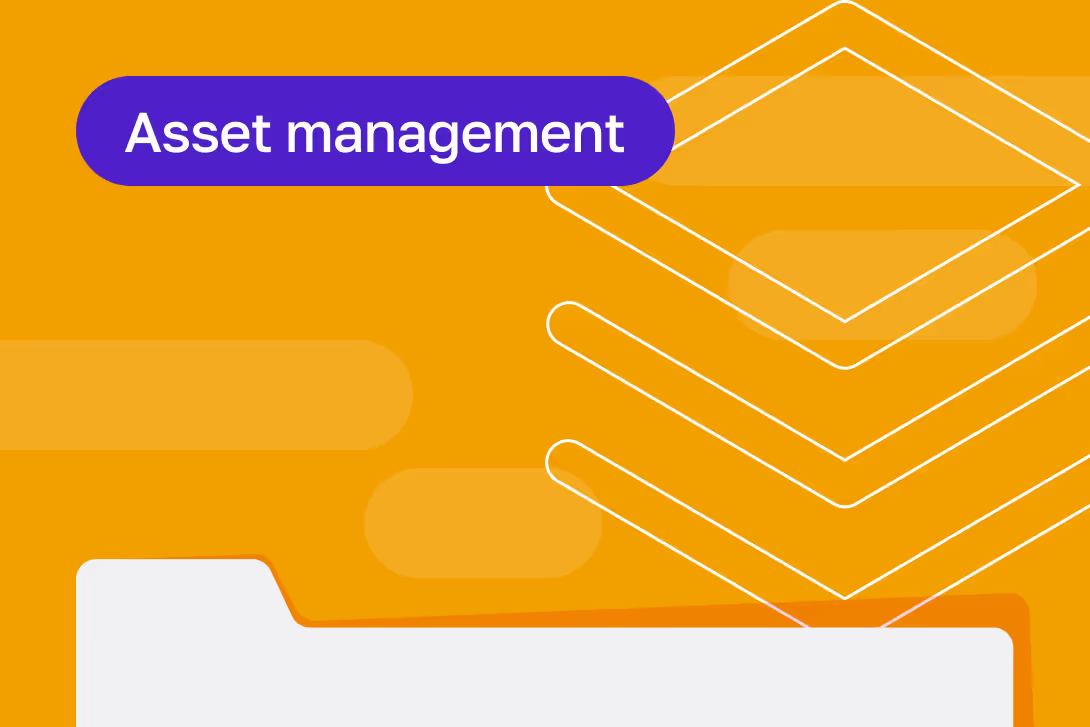A quick offboarding checklist for tech companies


Listen to this blog as a podcast

.png)
When someone leaves your company, the IT offboarding process needs to move fast — and get everything right. Otherwise, you risk security gaps, forgotten hardware, or loose ends in your systems.
This offboarding checklist is designed for IT teams at growing tech companies who want a smoother and safer offboarding process without reinventing the wheel.
What is IT offboarding (and why does it matter)?
IT offboarding is the process of removing a departing employee’s access to your systems, recovering equipment, and protecting company data.
It’s not just about checking boxes. It’s a critical part of your security and compliance program. A missed laptop or an active account can expose your business to real risk.
That’s why a strong offboarding process isn’t optional — it’s essential.
Your 7-step IT offboarding checklist
Here’s what to include in every offboarding workflow. Think of this as your baseline. You can tweak it based on role, location, or tools, but these steps should always be covered.
1. Disable accounts and access
Start with system access.
You’ll want to deactivate logins for:
- Email and communication tools (like Google Workspace, Slack, Teams)
- Identity providers (Okta, Azure AD, etc.)
- Business-critical platforms (GitHub, Salesforce, Notion, etc.)
Timing matters here. Some access features (such as email forwarding) may remain active temporarily. Others should be revoked immediately. Use your SSO provider (e.g., Okta or Azure AD) to see every app the employee accessed, not just the ones you remember.
2. Reclaim devices and hardware
Make sure you’ve accounted for:
- Laptops, monitors, and phones
- Security keys or tokens
- Any other issued accessories
If the employee is remote, include prepaid shipping labels and track returns.
3. Transfer ownership of files and apps
Any files, project work, or accounts the employee owned need to be reassigned. That includes shared drives, workflow tools, and customer accounts.
Don't just delete — transfer. Remember to update calendars, Google Drive folders, Notion pages, and even customer support threads if necessary.
Pro tip: don’t forget shared inboxes, calendars, or department-level logins — they’re easy to overlook and often contain sensitive info
4. Remove app licenses and subscriptions
Freeing up unused licenses can save money and prevent unauthorized access. Cancel, reassign, or deactivate licenses for the software the employee used. With the average company using over 130 SaaS apps, clearing unused licenses can add up fast.”
5. Document the offboarding
Keep an internal record of what was completed, when, and by whom. This helps with compliance and makes it easier to spot any missed steps later.
6. Notify the right teams
HR, legal, finance, and security should be looped in. Depending on your setup, these teams may trigger parts of the offboarding process or need to sign off once it’s done.
7. Run a post-offboarding audit
After the dust settles, double-check that:
- All access has been removed
- Devices are returned
- No systems are left hanging
This audit doesn’t need to be complex — just thorough.
Common offboarding gaps (and how to avoid them)
Even mature IT teams miss steps when processes are manual or unclear.
Here are the top risks we see:
- Orphaned accounts: Unused but active accounts that can be exploited (example: a former engineer’s GitHub credentials that are active three weeks later).
- Missed hardware: Devices not returned or accounted for (example: a sales rep’s iPad never returned because no one followed up post-departure).
- Untransferred files: Key project data lost or inaccessible (example: a team loses visibility into key customer onboarding docs because they lived in a deactivated account).
- Lack of documentation: No clear record of what was done.
You can avoid these issues by using a consistent checklist and maintaining visibility into each step of the offboarding process.
Automating offboarding: Where to start
Offboarding doesn’t need a manual checklist each time. Automation enables quicker, consistent actions without losing control.
Teams often sync IT actions with HR events; for instance, an update in an employee’s status can automatically start the offboarding workflow, eliminating the need for separate IT requests.
Role-based rules manage the essentials: shutting down app access, deactivating accounts, and flagging unusual activities for review. Sales roles may involve tools such as Salesforce and Gong, while engineering teams might use GitHub and AWS.
Smart teams utilize pre-built playbooks for repeatable tasks, such as reclaiming hardware, transferring files, and canceling licenses, rather than writing every step from scratch.
As not everything happens at once, the system can generate tickets for tasks needing human input, such as confirming equipment returns or auditing access.
Tools like Fixify simplify the connection between these elements. You control the process, but automation manages the routine tasks in the background, ensuring nothing is overlooked.
Set the standard, then scale it
The best offboarding process is repeatable, auditable, and fast. It protects your business, supports your team, and leaves no room for loose ends.
Start with this checklist. Then, look for ways to streamline or automate what’s repetitive. You’ll keep your environment safer — and your team focused on more strategic work.
Want a hand building a faster offboarding process?
Related articles

Top IT Operations Management Tools (and Why Fixify Plays Nice With Them)


Managing IT costs: 7 ways to save big without cutting corners


The importance of IT asset management (and how to do it better)

Stay in the loop

Sign up to get notified about our latest news and blogs
.png)